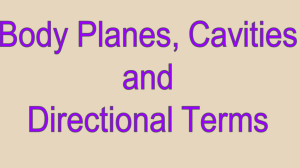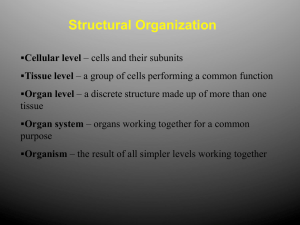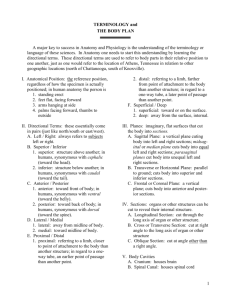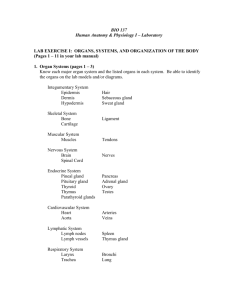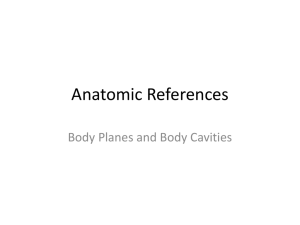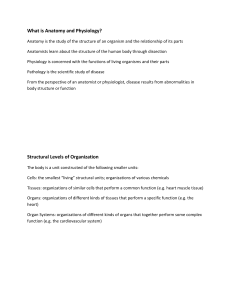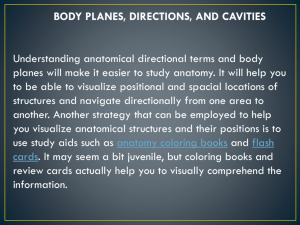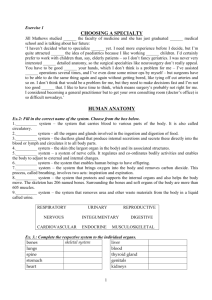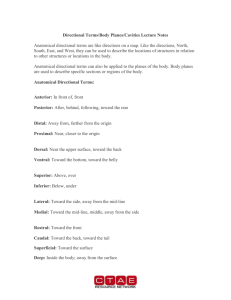TPJ 3C1 Body Planes, Directions, and Cavities
advertisement
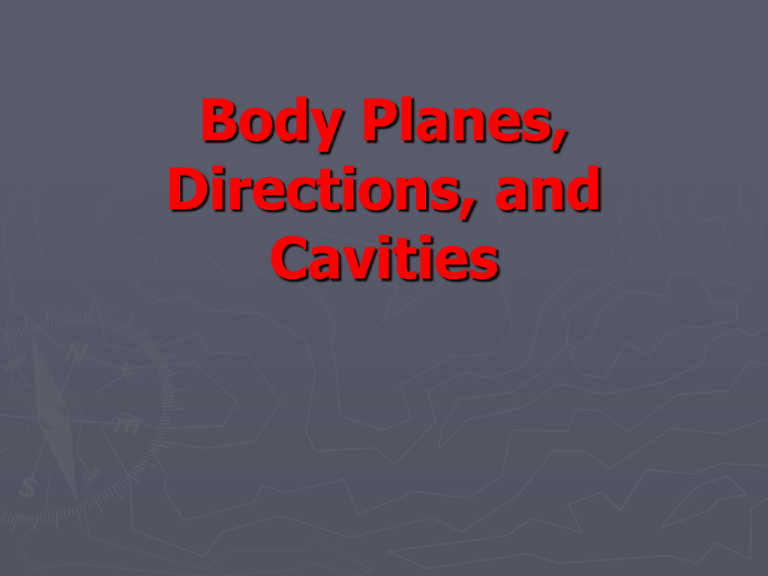
Body Planes, Directions, and Cavities Introduction ► to care for patients, you must be able to identify areas of the body for treatments, injections, or diagnoses ► directional terms locate a portion of the body or describe a position of the body eg. supine or prone ► for examination purposes, patients are either lying face up (supine) or face down (prone) Body Planes Imaginary lines drawn through body at various parts to separate body into sections Directional terms are created by these planes Three main planes: ►Transverse ►Sagittal ►Frontal (Midsagittal) Transverse Plane ► Horizontal plane that divides the body into top and bottom parts ► Body parts above other parts are called superior ► Body parts below other parts are called inferior ► ex: knee is superior to ankle, but inferior to hip Sagittal Plane ► divides the body into right and left sides ► Midsagittal plane divides the body into equal halves ► Body parts close to the midline, or plane, are called medial ► Body parts away from the midline are called lateral Frontal or Coronal Plane ► Divides the body into front and back sections ► Body parts in front of plane, or on the front of the body are called anterior ► Body parts in back of plane, or on the back of the body are called posterior Other Directional Terms ► Proximal: body parts close to the main trunk of the body (generally called the point of reference) ► Distal: body parts distant from the point of reference ► Superficial: toward the body surface ► Deep: away from the body surface Body Cavities ► Spaces within body that contain vital organs Two main body cavities: 1. Dorsal One long, continuous cavity located on back of body Divided into two sections: cranial, which contains the brain, and the spinal cavity, which contains the spinal cord Body Cavities 2. Ventral on the front side of the body Separated into two distinct parts by diaphragm Thoracic cavity is located in chest and contains heart, lungs and major blood vessels Abdominal cavity is divided into upper and lower parts ►Upper abdominal cavity contains organs of digestive and urinary system ►Pelvic cavity contains reproductive organs Abdominal Cavity Abdominal cavity is so large it is divided into smaller parts One method is into quadrants (Right Upper Quadrant, Left Upper Quadrant, Right Lower Quadrant, Left Lower Quadrant) Another method is into regions Abdominal Regions ► Center region Epigastric (above stomach) Umbilical (near the umbilicus or navel) Hypogastric (below navel) ► Either side of center region Hypochondriac (below ribs) Lumbar (near the waist) Iliac, or inguinal (near the hipbone) Apply your Knowledge ► Loretta complains of abdominal pain. The emergency room physician suspects that she may have appendicitis. ► In which of the following quadrants is the appendix located? A. RUQ B. RLQ C. LUQ D. LLQ Answer: B. RLQ Apply your Knowledge ► This patient is being examined. Which of the following positions is she in? A. Prone B. Supine Answer: B. Supine Apply your Knowledge ► Complete the following statements by adding the correct directional terms. 1. The hands are ________________ to the elbow. distal 2. The nose is _______________ to the ear. medial 3. The stomach is _____________ to the heart and ________________ to the intestines. inferior, superior Apply your Knowledge are the opposites for the following directional terms? ► What •deep superficial •posterior anterior •inferior superior •supine prone •lateral medial
